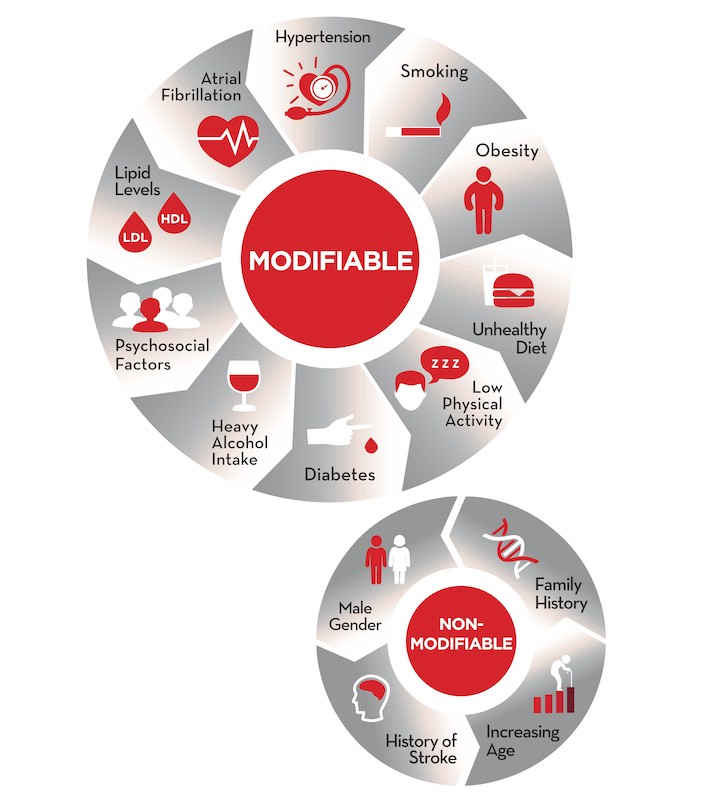Understanding stroke
Q. I have several questions about stroke – what are the main risk factors? What are the common signs of stroke? How common is a stroke? Why is it important to call 995 for an ambulance?
 There are some risk factors which are modifiable and others which are not. These are the modifiable and non-modifiable risk factors of stroke. Eighty percent of strokes are preventable by controlling the modifiable risk factors. Three common modifiable risk factors of stroke are:
There are some risk factors which are modifiable and others which are not. These are the modifiable and non-modifiable risk factors of stroke. Eighty percent of strokes are preventable by controlling the modifiable risk factors. Three common modifiable risk factors of stroke are:
- High blood pressure, or hypertension – It is the most significant modifiable cause of stroke. It is often symptomless and damages blood vessels leading to serious health issues including stroke. Taking medication as prescribed and making lifestyle changes to manage blood pressure has a key role in reducing stroke risk.
- Atrial fibrillation (AF), a heart rhythm disorder – This increases stroke risk by five times. AF causes the heart to beat irregularly, which may cause blood to pool and clot within the heart. These clots can travel to the brain and cause a stroke. Strokes due to AF are more severe resulting in greater disability and mortality. There are proven treatments that reduce the risk of stroke in patients with AF.
- Smoking – It is a well-established risk factor for stroke. Quitting smoking will reduce one’s risk of a stroke as well as reduce the risk of other health problems.
Lifestyle modifications are key to reducing stroke risk:
- Observe a healthy lifestyle by eating a healthy diet, exercising regularly and maintaining a healthy weight.
- Reduce your alcohol intake and quit smoking.
- Go for regular health screening and consult your doctor regularly for chronic conditions, including hypertension and AF.
In terms of the common signs of stroke, F.A.S.T. is an easy way to remember the common signs of stroke and what action to take.
- Face drooping: Is the person’s smile uneven?
- Arm weakness: Can the person raise both arms and keep them up?
- Speech difficulty: Does the person’s speech sound slurred or unclear?
- Time to call 995: If the person shows any of these symptoms, they need to be rushed to the hospital immediately.
Recognising someone is having a stroke and calling for an ambulance so that the patient arrives at a hospital as soon as possible is important as there are time-critical acute stroke treatments that have proven to improve patients’ outcomes.
Stroke is an emergency. Therefore, if someone is having symptoms of stroke, members of the public should call 995 for a SCDF ambulance immediately. The ambulance paramedics are trained to assess the patient’s condition and convey the patient to designated hospitals for further assessment and treatment. Furthermore, in cases of stroke, the SCDF paramedics will alert the emergency department of the receiving hospital en-route so that the hospital team is ready to assess and treat the patient promptly upon their arrival at the hospital.
How common is stroke? Stroke will affect one in four people in their lifetime. In Singapore, there were 7,741 new stroke episodes in 2017, an increase from 7,397 in 2016 and 7,400 in 2015.
– A/Prof Deidre Anne De Silva, Department of Neurology, National Neuroscience Institute (Singapore General Hospital campus)
(** PHOTO CREDIT (hands): American Stroke Association)


0 Comments